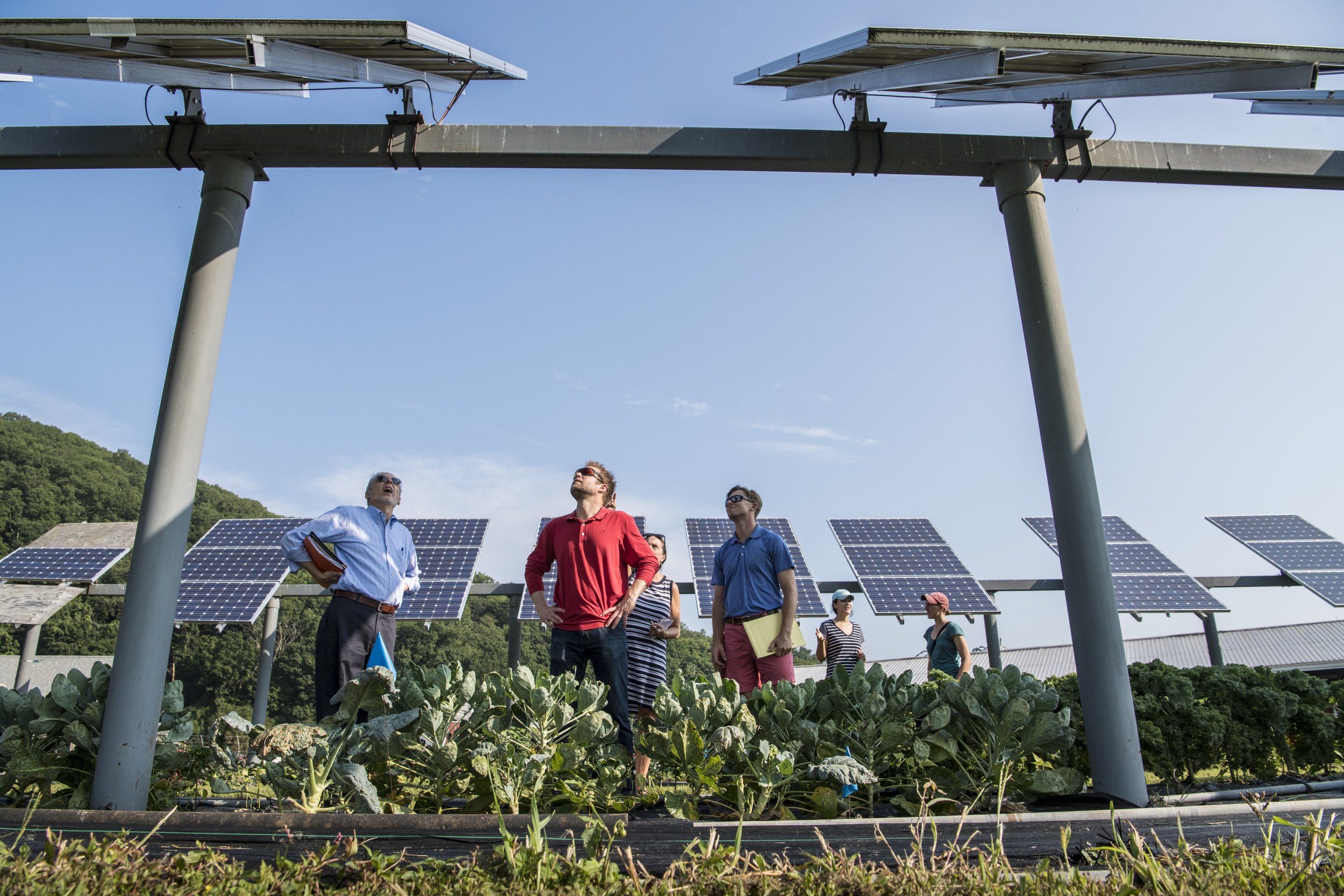
Agrivoltaics Potenial to Meet New York State Renewable Energy Goals
The Report:
Agrivoltaics Potential to Meet New York state Renewable Energy Goals, a 2024 report prepared by Craig Hart, Executive Director of the Pace Energy and Climate Center at Pace University’s Haub School of Law, highlights how agrivoltaics — the coexistence of agriculture and solar energy production — presents a potentially groundbreaking opportunity for New York State. By combining agriculture and solar photovoltaics, agrivoltaics offers the possibility to enhance the financial stability of small farms and to contribute to meeting State renewable energy production goals.
A Sustainable Solution
For farming, agrivoltaics can be truly transformative, stemming the trend of farm failures and consolidation, and offering an alternative to a destabilizing model of farming that produces low-margin high-volume crops for food and ethanol production, and that consumes large volumes of chemicals that contaminate the soil and requires large capital investments.
In order for Solar and Farming to successfully co-exist….
.…agrivoltaics must address the challenges of siting renewable energy generation on agricultural lands while maintaining food production on those lands and preserving community aesthetics. Dual use of land will help maintain food production, grow farm revenues, enable farmers to pursue more sustainable farming methods by stabilizing farm financial health, and by extension their communities.
The report is structured in five chapters:
Chapter 1
Estimates the potential of solar photovoltaics on farms in New York and their role in achieving CLCPA goals.
Chapter 2
Examines sourcing agrivoltaics farmland to meet CLCPA goals, comparing it to corn ethanol and hay production, and highlights its superiority in energy, economic, and environmental benefits.
Chapter 3
Analyzes the economic benefits of agrivoltaics for farms and communities.
Chapter 4
Addresses solar PV siting on farms, outlining practices to comply with regulations and maintain community aesthetics.
Chapter 5
Proposes a strategy to protect farmland through agrivoltaics.






